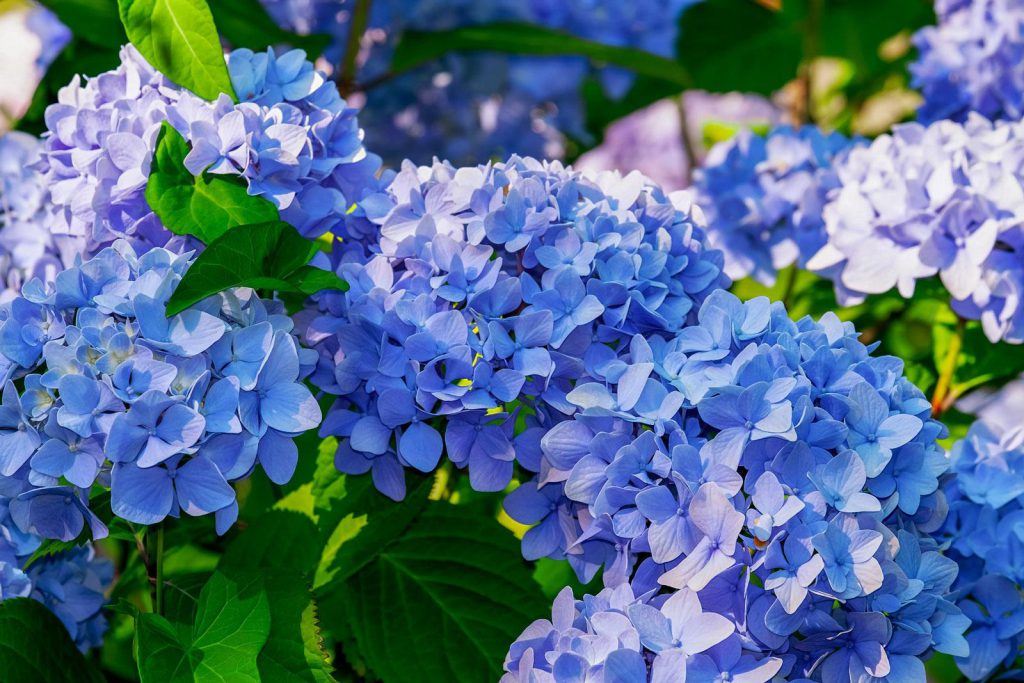Gardening is a weird mix of science, creativity and hard labour – you’ve got to prune and plant at the right time, dig over your soil and add in compost, then decide which plants and shrubs and where you want them. Not only that, but you’ve got to think of the plant itself – is it deciduous, a fast-growing tree or does it only bloom in autumn? It’s not simple, especially for a newbie gardener, so let’s start easy:
- General pruning tips
- Summer pruning tips
- Pruning roses in autumn and other deciduous shrubs
- Annuals and perennials
Let start clipping and tidying to make way for your summer planting plans.
General pruning tips
Pruning is always a tricky one as the labels don’t always say, and the internet has differing opinions. However, giving your plants a trim every year encourages stronger or bushier growth and increases blooming or fruiting. It also helps to shape the plants around things like trellis, gates and gazebos.
A good rule of thumb is to prune when a plant has just entered its dormant phase. This is when all the blooms have faded, new growth has stopped, and the plant is focusing on root growth and survival. Be careful though, if you prune too late in the year, any new growth may die in the frosts. The safest idea is to keep it simple and remove any crossing stems, then gently shape the plant.
Top tip: Leave any fruits or berries on the plant as long as possible for the birds.
For diseased or dead growth, you should prune this out asap to prevent the spread, reduce the number of insects and keep your greenery looking lush.
Why not grab a pruning bag and wander around the garden with your clean secateurs once at the end of every season? Just give everything a little tidy up, then do one in-depth prune according to the specific flowering time.
Some plants don’t follow the pattern though. For instance, working out when to prune hydrangeas is tricky as their flowers can bloom on new or old growth depending on the variety.
If you know the botanical name, you can find out when to prune a plant easily, but if you don’t, you can get an idea by looking at where the flowers appear:
- If they show up on new growth, you’ll need to prune in late winter before the new spring growth appears.
- If they flower on old wood – prune in summer after the flowers fade.
Summer pruning tips
There’s not a lot of pruning needed in summer as things are usually in full bloom or looking wonderfully colourful. The only plants you’ll need to prune are those with spring or summer-blooming flowers that grow on old wood – kind of like those hydrangeas we mentioned. We’re talking fruit trees to promote growth on old stems, hedges to keep them in shape and climbers to keep them under control.
Aim to prune out frost-damaged stems only and remember; less is better. Other than that, stick to deadheading and tidying up diseased and dead stems. And try to stay away from pruning trees or hedges where birds nest – in the UK, they have a law that prohibits the destruction of any wild birds nest.
Pruning roses in autumn and other deciduous shrubs
Roses are stunning plants and are relatively low maintenance. It’s best to prune these in late winter or early spring, not autumn, as you want to catch them just before the new growth starts. Look out for new buds as an indicator of when is the best time to shape things up. You can prune some roses in autumn, but it’s best to just remove any stems which may snap in the wind or cause the plant to be top-heavy. Remember to cut above a bud and on an angle to prevent sitting water
Deciduous shrubs are those where the leave fall off in winter leaving bare stems – think fuchsias and acers. They need some pruning once the leaves have finished dropping to form a good shape and balanced growth – it also helps to rejuvenate older shrubs.
Annuals and perennials and bulbs
What are annuals?
Annuals plants are those that only last one year – they’re typically grown from seed and die back to nothing. The only pruning they need is deadheading to help them put more energy into continuous blooming.
What are perennials?
Perennials are non-woody plants that are not considered shrubs. They tend to be evergreen and flower year after year – Bergenia and ornamental grass, for example. Herbaceous perennials completely die back and survive through their roots in the winter – think geraniums and sedum. Both kinds need little pruning other than to remove dead greenery or prevent flopping.
What are bulbs?
Bulbs are large round ‘resting stage’ seeds that can be planted in the ground when dormant. The large size stores food so that they can feed themselves while they produce new growth. With bulbs, it’s best to trim back the greenery once it turns yellow. Avoid pruning before then as the bulbs use the green stems to produce enough food to get them through until the following year.
At the end of the day, each plant is different and has different pruning needs. Whether it’s deciduous, a fast-growing tree or otherwise, the easiest thing to do is keep track of all the botanical names so you can research and note down their pruning requirements. Otherwise, check where they flower, ask for advice and make an educated guess when you can.

Pingback: 10 Reasons To Hire A Professional Garden Landscaper